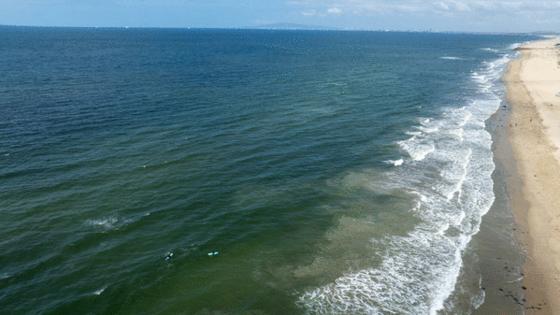Lethal algae bloom is over, but sickened marine mammals aren't safe yet
Published in News & Features
LOS ANGELES — It was one of the largest, longest and most lethal harmful algae blooms in Southern California's recorded history, claiming the lives of hundreds of dolphins and sea lions between Baja California and the Central Coast. And now, finally, it's over.
Levels of toxic algae species in Southern California coastal waters have declined in recent weeks below thresholds that pose a threat to marine wildlife, according to the Southern California Coastal Ocean Observing System, or SCCOOS, which monitors algae blooms.
lthough this provides a much-needed respite for marine mammals and the people working to save them from neurotoxin poisoning, scientists warned that the coastal ecosystem is in the clear yet.
Just as January's firestorms struck well outside Southern California's typical fire season, this explosion of harmful algae appeared earlier in the year than have previous blooms. Further outbreaks are still possible before the year is up, said Dave Bader, a marine biologist and the chief operations and education officer for the Marine Mammal Care Center in San Pedro.
"It's definitely over, but we still have the work of rehabilitating the [animals] that we have saved," Bader said Wednesday. "And we're not out of the woods with this year at all."
Bader was among a group of ocean specialists who gathered at the AltaSea complex at the Port of Los Angeles to brief Mayor Karen Bass on the coastal effects of January's fires.
That disaster didn't cause the algae blooms. This is the fourth consecutive year such outbreaks have occurred along the Southern California coast, fueled by an upwelling of nutrient-rich waters from the deep ocean.
Yet multiple research teams are currently investigating whether the surge of additional runoff into the sea resulting from the firestorms may have contributed to the recent bloom's intensity.
No data on the subject are available yet. But given the relationship between nutrients and harmful algae species, Mark Gold of the Natural Resources Defense Council said he would not be surprised if the fires played a role in this year's severity.
"As a scientist who's been looking at impacts of pollution on the ocean for my whole career, … one would expect that [fire runoff] is also having impacts on harmful algal blooms, from the standpoint of the intensity of the blooms, the scope, the scale, etc.," said Gold, the organization's director of water scarcity solutions. "We'll find that out when all this analysis and research is completed."
In terms of animal mortality, this year's bloom was the worst since 2015-16 outbreak that killed thousands of animals between Alaska and Baja California, said SCCOOS director Clarissa Anderson of UC San Diego's Scripps Institution of Oceanography.
Four different algae species were present this year. The two most dangerous produce powerful neurotoxins that accumulate in the marine food chain: Alexandrium catenella, which produces saxitoxin, and Pseudo-nitzschia australis, which produces domoic acid.
The toxins accumulate in filter-feeding fish, and then poison larger mammals who gobble up the fish in mass quantities. (This is why the blooms don't pose the same health risks to humans — very few people eat up to 40 pounds of fish straight from the sea each day.)
Beginning in February, hundreds of dolphins and sea lions started washing up on California beaches, either dead or suffering neurotoxin poisoning symptoms such as aggression, lethargy and seizures. A minke whale in Long Beach Harbor and a gray whale that stranded in Huntington Beach also succumbed to the outbreak. Scientists believe countless more animals died at sea.
The outbreak was more lethal than those in recent years, Bader said, and veterinarians were able to save fewer animals than they have in the past.
Researchers are still grappling with the catastrophe's full impact on marine mammal species. The outbreak was particularly deadly for breeding females. California sea lions typically give birth in June after an 11-month gestation. At the blooms' peak, "they were actively feeding for two," Bader said.
Domoic acid crosses the placenta. None of the pregnant animals the center rescued delivered live babies, he said.
"We don't really know what the environmental impact, long term, is of [blooms] four years in a row, right during breeding season," Bader said. "The full impact of this is going to be hard to know, especially at a time when research budgets are being cut."
As climate change has shifted the timing and intensity of the strong wind events that drive upwellings, "we're coming into a future where we unfortunately have to expect we'll see these events with recurring frequency," Bader told Bass at the roundtable. "The events that drove the fires are the events that drove the upwelling."
©2025 Los Angeles Times. Visit at latimes.com. Distributed by Tribune Content Agency, LLC.







Comments